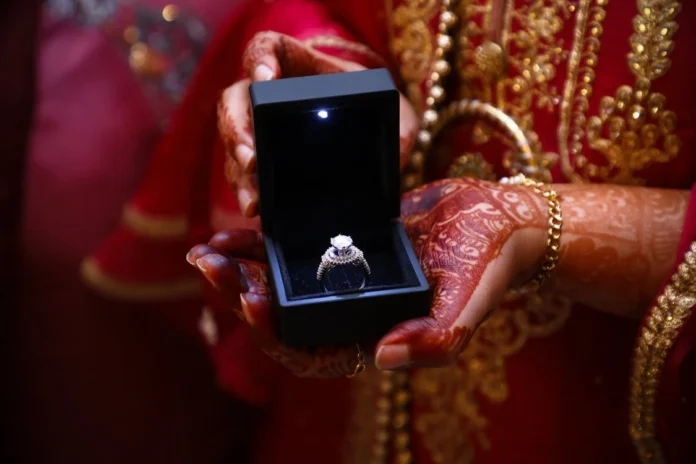Introduction
Sapphires have long fascinated humanity with their alluring beauty and rich history. These gemstones are more than just dazzling jewels; they hold tales of royalty, romance, and mystery. Our goal in this blog post is to take you on a comprehensive journey through the world of sapphires. From their scientific properties to their cultural significance, you’ll discover why sapphires have captivated people for centuries. Whether you’re a gem enthusiast, a potential buyer, or simply curious, this guide is tailored to fuel your fascination.
The Science Behind Sapphires
What Are Sapphires Made Of?
Sapphires belong to the corundum family, composed primarily of aluminum oxide. They get their color from trace elements like iron, titanium, and chromium. The presence of these elements results in the mesmerizing hues sapphires are known for, making each gemstone unique.
How Do Sapphires Form?
Sapphires form under intense heat and pressure within the Earth’s crust. This natural process can take millions of years. The gems are typically found in metamorphic rocks and alluvial deposits. Their formation in extreme conditions contributes to their exceptional hardness, which ranks 9 on the Mohs scale, second only to diamonds.
Unique Properties of Sapphires
Apart from their hardness, sapphires exhibit pleochroism, meaning they show different colors when viewed from different angles. This optical property adds to their allure, making each sapphire a unique piece of art. Additionally, some sapphires display a star-like pattern known as asterism, caused by needle-like inclusions of rutile.
The Spectrum of Sapphire Colors
Classic Blue Sapphires
When people think of sapphires, the deep, velvety blue hue often comes to mind. This classic color is cherished for its regal appearance and timeless elegance. Blue sapphires are particularly popular in engagement rings and high-end jewelry.
Fancy Color Sapphires
Beyond blue, sapphires come in an array of stunning colors, known as fancy sapphires. These include pink, yellow, green, and even white sapphires. Each color variation is caused by different trace elements during the gem’s formation, providing a broad palette for jewelry design.
The Rare Padparadscha Sapphire
One of the rarest and most coveted varieties is the padparadscha sapphire, exhibiting a delicate blend of pink and orange hues. Named after the lotus flower’s color, padparadscha sapphires are highly prized and often fetch significant prices in the gemstone market.
Sapphires in Jewelry and Fashion
Historical Significance
Historically, sapphires have adorned royal crowns and religious relics, symbolizing wisdom and purity. The British Crown Jewels feature an array of spectacular sapphires, underscoring their regal status.
Modern Trends
Today, sapphires continue to inspire modern jewelry designers. Celebrities and fashion icons frequently choose sapphire pieces for red-carpet events, setting trends in the industry. From statement necklaces to elegant earrings, sapphires are versatile enough to suit various styles and occasions.
Iconic Pieces
One of the most famous sapphire pieces is the engagement ring worn by Princess Diana, now gracing the finger of Kate Middleton. This iconic ring has sparked global interest in sapphire engagement rings, solidifying the gem’s place in contemporary fashion.
Tips for Purchasing Sapphire Jewelry
Understanding Quality
When purchasing sapphires, consider the “Four Cs”: color, clarity, cut, and carat weight. Color is the most critical factor, with vivid, saturated hues being the most desirable. Clarity refers to the presence of inclusions, while the cut affects the gem’s brilliance. Carat weight measures the gemstone’s size.
Treatments and Certifications
Many sapphires undergo treatments to enhance their color and clarity. Common treatments include heat treatment and diffusion. Always ask for certification from reputable gemological laboratories to ensure transparency and authenticity.
Care and Maintenance
Sapphires are durable but require proper care to maintain their luster. Clean your sapphire jewelry with mild soapy water and a soft brush. Avoid exposing them to harsh chemicals or extreme temperature changes.
Cultural and Symbolic Meanings
Sapphires Around the World
Sapphires hold varied cultural significance across different regions. In ancient Greece and Rome, they were believed to protect wearers from harm and envy. In Hindu tradition, blue sapphires are associated with Saturn and are thought to bring prosperity when worn properly.
Birthstone Significance
Sapphires are the birthstone for September, symbolizing loyalty and trust. Gifting sapphire jewelry for September birthdays or 45th wedding anniversaries is a cherished tradition.
Spiritual and Healing Properties
Many believe sapphires possess spiritual and healing properties. They are thought to promote mental clarity, inner peace, and spiritual enlightenment. These attributes add to the gem’s allure, making it more than just a decorative item.
Conclusion
Sapphires are more than just beautiful gemstones. They are a blend of science, history, culture, and personal significance. From their formation deep within the Earth to their role in modern fashion, sapphires continue to fascinate and inspire.
If you’re considering adding a sapphire to your collection or simply want to learn more, our comprehensive guide has provided valuable insights. For personalized advice or to explore our exquisite sapphire collection, feel free to reach out to us. Embark on your sapphire journey today and experience the timeless elegance of this extraordinary gemstone.

